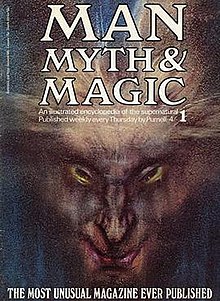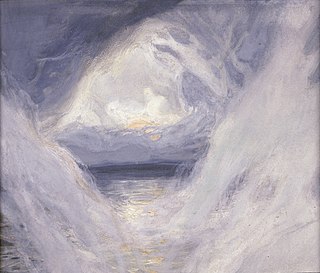
A creation myth or cosmogonic myth is a type of cosmogony, a symbolic narrative of how the world began and how people first came to inhabit it. While in popular usage the term myth often refers to false or fanciful stories, members of cultures often ascribe varying degrees of truth to their creation myths. In the society in which it is told, a creation myth is usually regarded as conveying profound truths – metaphorically, symbolically, historically, or literally. They are commonly, although not always, considered cosmogonical myths – that is, they describe the ordering of the cosmos from a state of chaos or amorphousness.
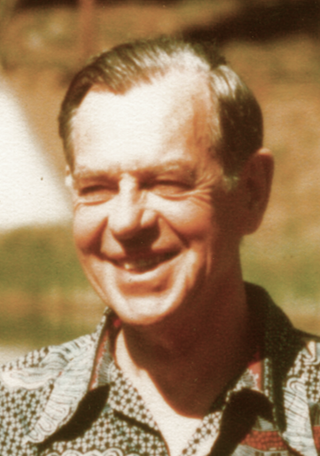
Joseph John Campbell was an American writer. He was a professor of literature at Sarah Lawrence College who worked in comparative mythology and comparative religion. His work covers many aspects of the human experience. Campbell's best-known work is his book The Hero with a Thousand Faces (1949), in which he discusses his theory of the journey of the archetypal hero shared by world mythologies, termed the monomyth.
Religion and mythology differ in scope but have overlapping aspects. Both are systems of concepts that are of high importance to a certain community, making statements concerning the supernatural or sacred. Generally, mythology is considered one component or aspect of religion. Religion is the broader term: besides mythological aspects, it includes aspects of ritual, morality, theology, and mystical experience. A given mythology is almost always associated with a certain religion such as Greek mythology with Ancient Greek religion. Disconnected from its religious system, a myth may lose its immediate relevance to the community and evolve—away from sacred importance—into a legend or folktale.

Supernatural refers to phenomena or entities that are beyond the laws of nature. The term is derived from Medieval Latin supernaturalis, from Latin super- + natura (nature). Although the corollary term "nature" has had multiple meanings since the ancient world, the term "supernatural" emerged in the Middle Ages and did not exist in the ancient world.
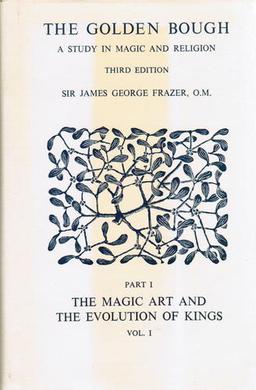
The Golden Bough: A Study in Comparative Religion is a wide-ranging, comparative study of mythology and religion, written by the Scottish anthropologist Sir James George Frazer. The Golden Bough was first published in two volumes in 1890; in three volumes in 1900; and in twelve volumes in the third edition, published 1906–1915. It has also been published in several different one-volume abridgments. The work was for a wide literate audience raised on tales as told in such publications as Thomas Bulfinch's The Age of Fable, or Stories of Gods and Heroes (1855). The influence of The Golden Bough on contemporary European literature and thought was substantial.
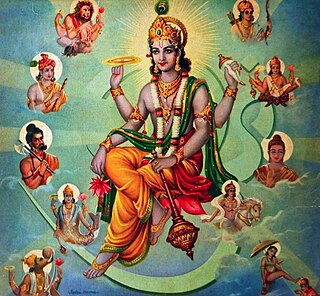
Hindu deities are the gods and goddesses in Hinduism. Deities in Hinduism are as diverse as its traditions, and a Hindu can choose to be polytheistic, pantheistic, monotheistic, monistic, even agnostic, atheistic, or humanist. The terms and epithets for deities within the diverse traditions of Hinduism vary, and include Deva, Devi, Ishvara, Ishvari, Bhagavān and Bhagavati.
Belief in magic exists in all societies, regardless of whether they have organized religious hierarchy including formal clergy or more informal systems. While such concepts appear more frequently in cultures based in polytheism, animism, or shamanism. Religion and magic became conceptually separated in the West where the distinction arose between supernatural events sanctioned by approved religious doctrine versus magic rooted in other religious sources. With the rise of Christianity this became characterised with the contrast between divine miracles versus folk religion, superstition, or occult speculation.
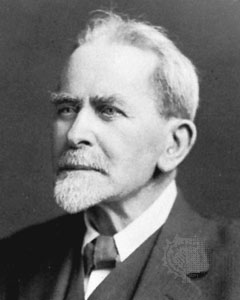
Sir James George Frazer was a Scottish social anthropologist and folklorist influential in the early stages of the modern studies of mythology and comparative religion.
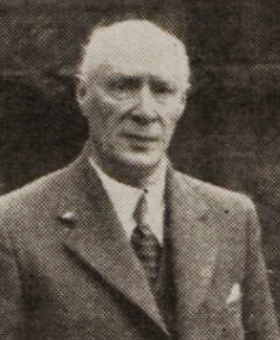
James Lewis Thomas Chalmers Spence was a Scottish journalist, poet, author, folklorist and occult scholar. Spence was a Fellow of the Royal Anthropological Institute of Great Britain and Ireland, and vice-president of the Scottish Anthropological and Folklore Society. He founded the Scottish National Movement.

Hilda Roderick Ellis Davidson was an English folklorist. She was a scholar at the University of Cambridge and The Folklore Society, and specialized in the study of Celtic and Germanic religion and folklore.

Terri Windling is an American editor, artist, essayist, and the author of books for both children and adults. She has won nine World Fantasy Awards, the Mythopoeic Fantasy Award, and the Bram Stoker Award, and her collection The Armless Maiden appeared on the short-list for the James Tiptree, Jr. Award.
Richard Cavendish was a British historian who was considered Britain's foremost authority on the subjects of occultism, religion, the tarot, and mythology.
Benjamin Walker was the truncated pen name of George Benjamin Walker, who also wrote under the pseudonym Jivan Bhakar. He was a British citizen, an Indian-born author on religion and philosophy, and an authority on esoterica.
The Unexplained: Mysteries of Mind, Space, & Time was a popular partwork magazine published by Orbis Publishing in the United Kingdom, between 1980 and 1983. It ran to 156 issues, with issue 157 being an index to the collection, and dealt with the paranormal and mysteries such as UFOs, the Bermuda Triangle, ghosts, spontaneous human combustion, the Cottingley Fairies, ancient knowledge, sea monsters, the Yeti, weird coincidences, stone circles, contact with the dead, and notable historical characters linked to the occult. The magazine was published as a journal, with page numbering continuing from one edition to the next. When the magazine ceased publication, a refund was offered if the consumer returned the covers.
Matthew Manning is a best selling British author and healer, alleged to have psychic abilities. As a child he and his family were allegedly subjected to a range of poltergeist disturbances in their homes in Cambridge and Linton and as a boarder at Oakham School in Rutland.

Jan Guzyk (1875–1928), also known as Jan Guzik was a Polish spiritualist medium known for his alleged ability of psychokinesis. Guzyk was exposed as a fraud by psychical researchers Harry Price and Max Dessoir.
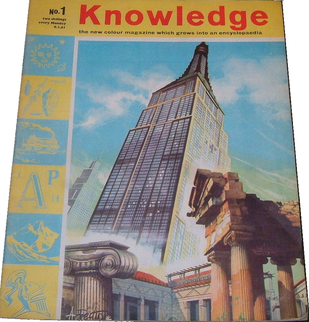
Knowledge was a British weekly educational magazine for children which was assembled in blue binders into an encyclopedia.
Cottie Arthur Burland was a British writer and researcher. He studied at the Regent Street Polytechnic, graduated from the University of Westminster, and spent much of his forty-year career spanning from 1925 to 1965, in the Department of Ethnography at the British Museum in London. In 1950 he became honorary curator for the Abbey Art Centre Museum in Hertfordshire. He briefly served in the Royal Air Force during World War II.

Apollo and Marsyas is the title of a 1637 painting by the Spanish artist José de Ribera, now in the Royal Museum of Fine Arts of Belgium. Other versions are now in the Museo di Capodimonte and the Naples Archaeological Museum. They all show the Caravaggisti's heavy influence on the artist, and depict Marsyas' flaying by Apollo.
Idlirvirissong, or Irdlirvirisissong, is an evil spirit in the religion of the Inuit of Baffin Island and the Greenlandic Inuit.
